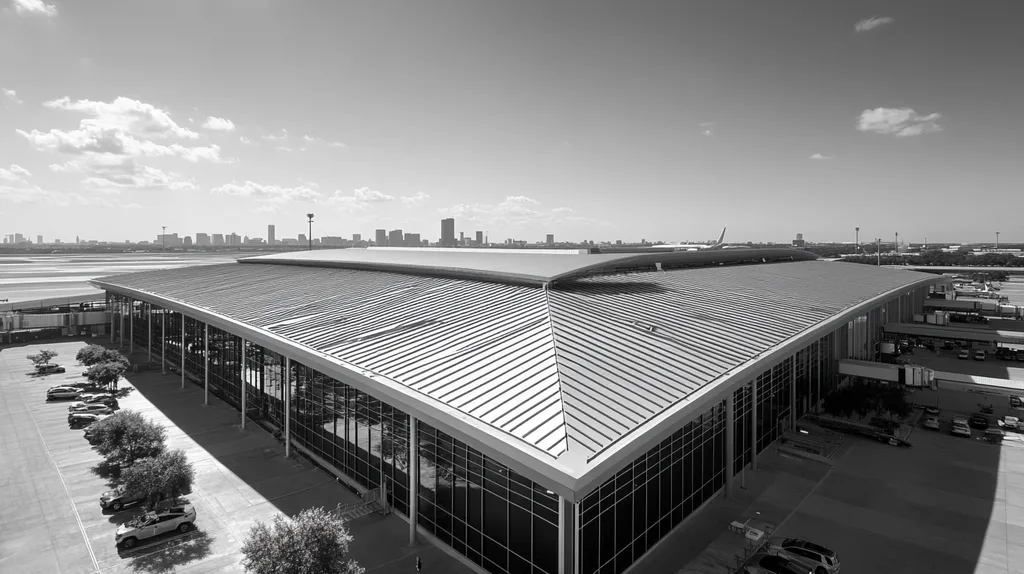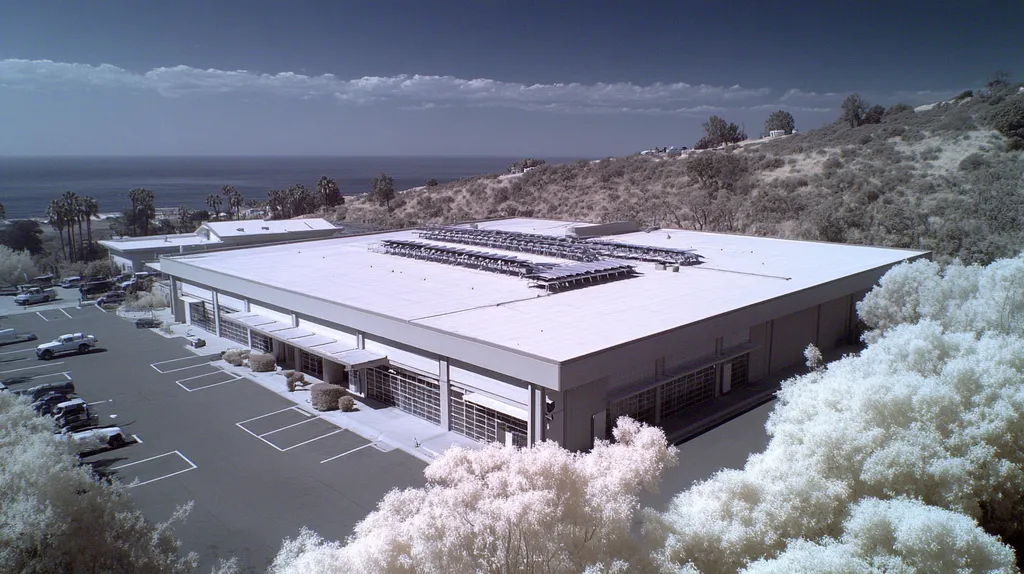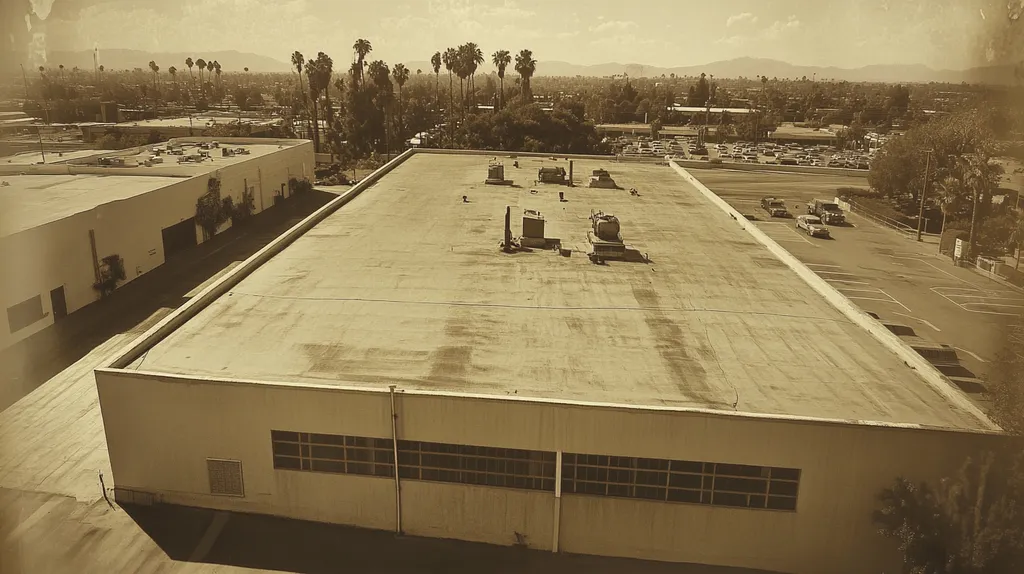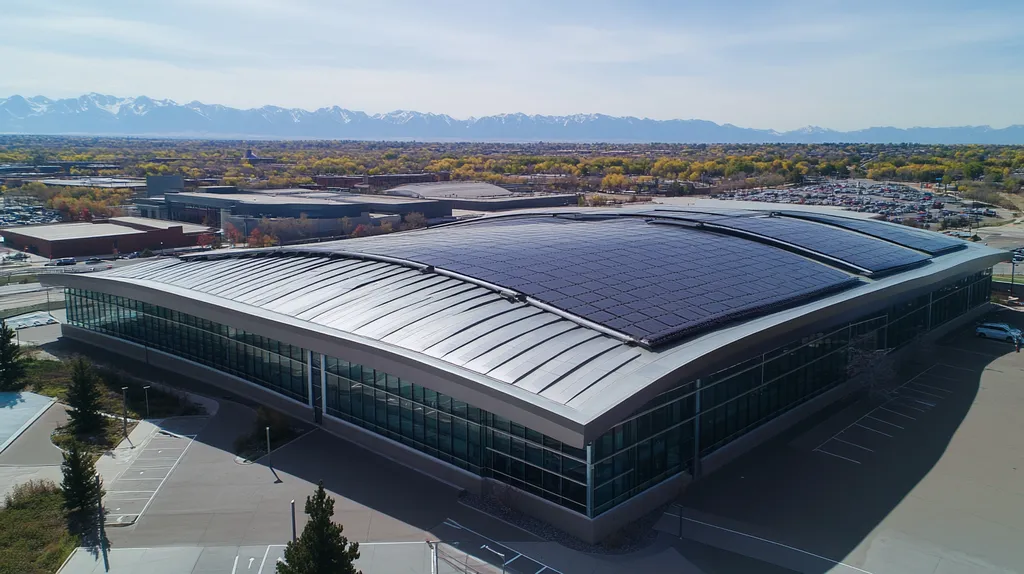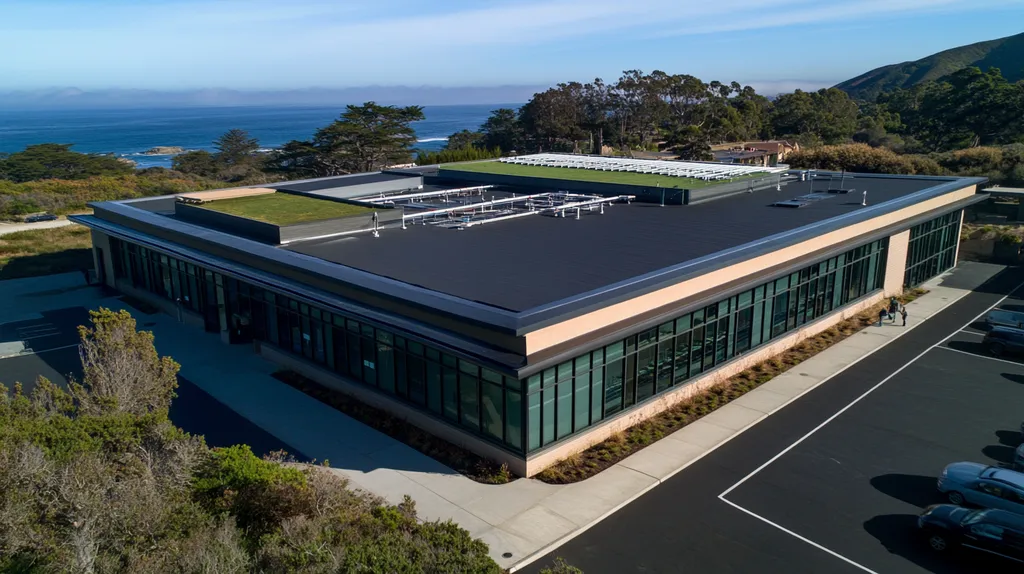Industrial roof coating failures cost facility owners over $2.3 billion annually in repairs and energy waste, yet widespread misconceptions continue to drive poor decision-making around coating selection and application.
As buildings face intensifying weather extremes and rising energy costs, understanding true performance metrics for industrial roof coatings has never been more critical.
This comprehensive guide examines common myths, practical implications, and evidence-based solutions to help facility managers make informed choices about roof coating systems that maximize protection and return on investment.
SECTION 1: COMMON MISCONCEPTIONS
Recognizing the truth about industrial roof coatings is essential for property owners and facility managers. Misunderstandings can lead to financial pitfalls, especially as neglected roofs frequently suffer from leaks, structural issues, and safety concerns. Alarmingly, over 40% of commercial roofs experience leaks within their first year. Dispelling these misconceptions is crucial for making informed decisions that affect roof maintenance and longevity.
Roof Coatings Are Just Paint
A widespread myth is that roof coatings are just thick paint, which can set unrealistic expectations about their effectiveness. In reality, roof coatings are sophisticated materials designed to provide enhanced water resistance, UV protection, and energy efficiency.
Unlike ordinary paint, these coatings are rigorously tested to endure extreme weather and deliver long-term benefits. For example, silicone and acrylic coatings have specific properties that can significantly extend the lifespan of the roof.
Treating coatings as simple paint may prompt facility managers to overlook critical features such as weatherproofing and reflective capabilities. This oversight could lead to higher energy bills and more frequent repairs.
Industry standards classify roof coatings as integral to roof maintenance rather than mere aesthetic upgrades. Understanding this difference can empower better decision-making when it comes to protecting roofing investments.
Coatings Are Only for Old Roofs
It’s a common belief that roof coatings are only meant for aging roofs. This misconception can be counterproductive, as applying coatings on new roofs can preemptively address issues before they manifest. In fact, proactive coating applications can significantly increase a roof’s life cycle.
New roofs treated with high-quality coatings benefit from enhanced UV protection and reduced thermal expansion. For instance, a newly coated roof can remain cooler in hot weather, translating to lower air conditioning costs.
Overlooking coatings on new roofs may expose them to damage from the beginning. Therefore, using coatings as a preventive strategy is a smart investment that can yield long-term savings.
By shifting the perception that only older roofs need coatings, property owners can protect their assets from the start, ensuring optimal performance and longevity.
Coatings Are a Temporary Fix
Many facilities managers perceive roof coatings as a short-term solution rather than a durable fix. This view can lead to hesitation in applying coatings, resulting in ongoing vulnerabilities. However, when installed properly, roof coatings offer robust, lasting protection.
Quality coatings bond effectively to existing roof membranes, creating a resilient barrier against the elements. Research shows that well-maintained roof coatings can last 10-20 years or even longer, making them a dependable choice for enhancing roof durability.
The temporary fix mentality often results in increased maintenance costs due to a lack of routine inspections and care. By recognizing coatings as a critical part of a long-term strategy, facilities managers can allocate their resources more effectively.
Understanding the true value and longevity of roof coatings is essential in developing a successful industrial roofing strategy. Adjusting this perspective can significantly improve cost-effectiveness and reliability in roof performance.
SECTION 2: PRACTICAL IMPLICATIONS
The choice of industrial roof coatings is not merely a cosmetic consideration; it has profound implications for both the roof’s lifespan and overall facility efficiency. Industry studies show that roofs utilizing high-quality coatings can endure up to 30% longer than their uncoated counterparts. This understanding is vital for property owners and facility managers focusing on protecting their investments while enhancing operational performance.
Impact on Roof Longevity and Durability
Utilizing roof coatings significantly extends the lifespan of industrial roofs. High-performance coatings act as a shield against harsh weather conditions, harmful UV rays, and chemical exposure. For instance, a roof equipped with a quality coating can resist severe weather impacts far better than an uncoated one.
Additionally, durable coatings effectively minimize leaks and damages. Facilities investing in robust coatings often see a reduction in warranty claims and lower insurance costs over time, protecting their buildings’ value and integrity.
Long-lasting coatings also lessen the frequency of roof replacements. This stability allows facility managers to focus on preventive maintenance without constant disruptions to business operations.
In conclusion, choosing the right roof coating is crucial for optimizing the longevity and durability of industrial roofing systems, ensuring that investments yield significant long-term benefits.
Effects on Energy Efficiency and Costs
Energy efficiency is a top priority for industrial roofs and directly influences operational costs. Reflective roof coatings can enhance a building’s energy performance by reducing heat accumulation. Research suggests that these reflective coatings can slash cooling costs by up to 30% in hotter climates.
Savings from lower energy bills not only benefit property owners financially but also align with sustainability goals. By connecting the dots between roof coatings and energy efficiency, facilities can make strategic decisions that enhance their bottom line.
Furthermore, many coatings qualify for energy efficiency rebates or incentives, boosting their overall return on investment. As energy prices rise, investing in superior roof coatings can lead to substantial long-term savings.
Ultimately, industrial properties that incorporate effective roof coatings achieve enhanced energy efficiency while creating a more comfortable working environment—showcasing the economic advantages of smart roofing decisions.
Influence on Maintenance and Repair Needs
While regular maintenance is essential for extending the life of industrial roofs, the type of roof coating applied can substantially reduce upkeep frequency and intensity. High-performance coatings can seal minor cracks and imperfections, preventing small issues from escalating into bigger problems.
Facilities with quality coatings typically encounter fewer unexpected repairs, allowing maintenance teams to concentrate on proactive rather than reactive solutions. This strategic shift can significantly boost operational efficiency across the facility.
Moreover, the longevity of roof coatings can simplify preventive maintenance plans by extending the intervals between required inspections. This enables property managers to allocate resources more effectively and create more precise budgets.
In short, choosing the right roof coatings greatly influences maintenance needs, cutting costs and ensuring roofs remain in optimal condition for extended periods.
SECTION 3: COST OF MISINFORMATION
The repercussions of misinformation surrounding industrial roof coatings can be immense. Misguided beliefs and practices not only risk premature roof failures but can also lead to significant financial setbacks for facility managers and property owners. Disturbingly, estimates suggest that as many as 30% of roof coating applications could fail due to misunderstandings about the proper materials and techniques. This section delves into the financial implications, resource waste, and missed opportunities stemming from such misinformation in the roofing industry.
Financial Consequences of Incorrect Applications
The financial implications of improper roof coating applications can be staggering. When a facility manager chooses a lower-quality product, it may lead to inadequate adhesion and necessitate costly repairs or even complete replacements. These unforeseen expenses can swiftly accumulate, sometimes reaching up to tens of thousands of dollars.
Moreover, inferior applications frequently come with reduced warranty coverage. Manufacturers often set specific installation requirements to validate warranties, and failing to adhere to these protocols can leave property owners without options for redress when issues arise.
The financial toll doesn’t stop with repairs. Facilities may also lose productivity and revenue due to downtime during the application or replacement process. Implementing efficient roofing practices informed by accurate information can help alleviate these risks.
In summary, the financial consequences of incorrect applications highlight the critical need for accurate knowledge when it comes to choosing and applying industrial roof coatings.
Energy and Resource Waste Due to Misconceptions
Misinformation can lead to unnecessary energy consumption and wastage of valuable resources. Many property owners fail to realize that reflective coatings can significantly lower energy expenses. Inadequate insulation or the wrong material choices can cause heat accumulation, resulting in inflated cooling costs during the hotter months.
For instance, using non-reflective coatings on flat roofs can lead to higher interior temperatures, impacting comfort and requiring greater air conditioning efforts, which inflates energy bills.
This energy waste has environmental implications as well. Frequent replacements driven by misconceptions contribute to landfill waste from discarded materials, undermining sustainability objectives for industries striving to adopt greener practices.
In conclusion, addressing these misconceptions can pave the way for energy-efficient buildings and reduced operational costs, making it essential to rely on accurate information about industrial roof coatings.
Opportunity Costs of Delayed Innovations
The spread of misinformation can hinder the adoption of beneficial innovations within the roofing industry. For example, the failure to meet modern energy efficiency standards may be influenced by decision-makers relying on outdated beliefs surrounding roofing materials. This hesitation can prevent facilities from investing in advanced coatings that offer improved durability and performance.
As the industry evolves with new technologies, embracing innovations like reflective coatings is critical for achieving long-term savings. Nevertheless, outdated perceptions can cultivate a reluctance to adopt these advancements.
This hesitance affects not only individual facilities but also stalls broader industry progress. When numerous companies lean on incorrect information, the entire sector stands to lose opportunities for cost reduction and enhanced operational efficiency.
In summary, the opportunity costs associated with delaying innovations due to misinformation create ripple effects that extend well beyond immediate financial consequences, jeopardizing the long-term health of the roofing industry as a whole.
SECTION 4: REALITY CHECK
The stakes for industrial roof coatings have never been higher. As operational costs rise, coupled with the growing effects of climate change, property owners must prioritize effective roofing solutions. Studies indicate that neglecting roof maintenance can lead to energy inefficiencies, potentially costing businesses thousands each year. Understanding updated performance metrics is crucial to navigating these challenges and making informed roofing decisions.
Updated ASTM Standards for Roof Coatings
Recent updates to ASTM standards have redefined the quality benchmarks for industrial roof coatings. These revised standards focus on durability and thermal performance, ensuring coatings can withstand diverse climate conditions. Property managers must engage with these standards to remain compliant and safeguard their investments.
Additionally, updated standards address environmental concerns by encouraging the use of low VOC (volatile organic compounds) coatings. This not only enhances air quality but can also qualify properties for green building certifications, potentially increasing market value.
By choosing coatings that meet or exceed these standards, property owners can enhance roof longevity while minimizing costly repairs and energy consumption, aligning with broader sustainability goals in the industry.
Staying informed about ongoing developments in these standards is essential for effective roofing management and optimizing long-term benefits.
Advanced Materials and Technologies
The roofing industry is undergoing a transformation thanks to advanced materials and technologies. Innovations such as reflective coatings and polymer-modified formulations significantly enhance the performance and longevity of roof systems. Reflective coatings, for instance, can lower roof surface temperatures, potentially reducing energy consumption by up to 30% during hot summer months.
Technologies like thermal imaging and drones facilitate evaluations of coating effectiveness. These tools allow facility managers to assess roof conditions while maintaining uninterrupted operations. Early identification of problems leads to timely interventions, saving both time and money.
Moreover, many modern coatings now feature self-cleaning properties, lowering maintenance demands and costs while extending service life. Investing in these innovative technologies addresses immediate performance concerns and positions facilities for sustained operational efficiency.
Ultimately, embracing advanced materials can revolutionize how property managers approach roof maintenance, ensuring that their investments yield long-term returns.
Real-World Performance Metrics and Data
Real-world performance metrics play a vital role in gauging the effectiveness of industrial roof coatings. Data have shown that roofs coated with qualified materials often have a service life extending beyond 20 years, demonstrating significantly fewer failures than non-coated options. This reliability translates into substantial savings over time.
Additionally, studies indicate that facilities utilizing high-quality coatings see a marked decrease in energy costs, averaging 15% annually. Such savings can easily justify the initial investment, as they directly contribute to return on investment.
Customer feedback further emphasizes these metrics, with property owners reporting increased productivity and lowered overheads due to improved roof performance. These qualitative measures further highlight the importance of selecting the right coating.
Utilizing real-world data empowers facility managers to make evidence-based decisions. Tracking these performance metrics can uncover potential maintenance needs and guide future upgrades, ensuring roofs continue to provide value long after installation.
SECTION 5: EVIDENCE-BASED ALTERNATIVES
With energy costs on the rise and regulations tightening, choosing the right roof coating is more crucial than ever for industrial property owners. Effective options not only promote energy efficiency but can also extend the lifespan of roofing systems. Some studies indicate that the right coatings can deliver energy savings of up to 30%. This section highlights innovative solutions that promise to elevate roofing performance.
Benefits of Cool Roof Coatings and Reflectance
Cool roof coatings are becoming essential for energy savings and climate management. By reflecting sunlight and absorbing less heat, these coatings help lower interior temperatures significantly. Research shows that implementing a cool roof can reduce energy costs by up to 20% during peak summer months.
Beyond just cost savings, cool roofs play a pivotal role in mitigating the urban heat island effect. By cooling buildings and their surroundings, they contribute to a more comfortable environment and improved air quality. Workplaces with cool roofs enhance comfort for employees, fostering greater productivity.
Moreover, these coatings are widely available and straightforward to apply, making them an accessible solution for many businesses. Their increased reflectivity not only provides energy savings but also extends the lifespan of roofing materials, leading to lower maintenance costs.
Investing in cool roof technology represents a commitment to both sustainability and enhanced energy efficiency. As regulations become stricter, adopting cool roofs positions businesses favorably within compliance metrics and market trends.
Advantages of Silicone and Elastomeric Coatings
Silicone and elastomeric coatings stand out as vital solutions for industrial roofs that require enhanced durability and flexibility. These coatings offer exceptional weather resistance, effectively preventing leaks and damage from adverse conditions. Facilities utilizing silicone roofs frequently report fewer maintenance challenges and reduced repair expenses.
One of their most significant advantages is the ability to withstand ponding water, a common issue with flat roofing systems. Unlike traditional coatings that can deteriorate, silicone maintains its performance, ensuring the roof’s integrity over time. This resilience reduces the need for frequent repairs, providing property managers with peace of mind.
Elastomeric coatings bring an added layer of protection with their remarkable elongation capabilities, allowing them to expand and contract with temperature changes. This adaptability is essential for regions experiencing significant temperature fluctuations.
Ultimately, both silicone and elastomeric coatings enhance energy efficiency through their reflective properties. Their combined traits make them compelling choices that can significantly improve the lifespan and performance of industrial roofing systems.
Innovative Solutions for Energy Efficiency
New technologies are reshaping energy efficiency strategies in industrial roofing. A notable advancement is the integration of photovoltaic (PV) panels with roof coatings, which allow for the conversion of sunlight into electricity. This combination can drastically reduce energy costs while promoting sustainable practices.
Green roof systems are also emerging as an effective alternative. These living roofs enhance insulation, manage stormwater, and lower heating and cooling requirements. Research indicates that green roofs can decrease energy demands by providing natural thermal insulation.
Another innovative advancement is the development of smart coatings that feature embedded sensor technology. These enable real-time monitoring of temperature and moisture levels, empowering facility managers to respond quickly and ensure roofs remain in peak condition.
By embracing these innovative solutions, industrial property owners reduce their carbon footprint and position themselves as frontrunners in sustainable practices. These state-of-the-art technologies are key to addressing the ever-evolving challenges surrounding energy efficiency.
SECTION 6: TEST AND VERIFY
In the competitive landscape of industrial roofing, ensuring a roof’s integrity isn’t just a matter of aesthetics; it’s about safeguarding energy costs and operational functionality. A roof that succumbs to harsh conditions can lead to extensive repairs and operational downtime. Therefore, property owners and facility managers must prioritize understanding key performance metrics. This section discusses essential testing methods to confirm that coating materials meet the required standards and ensure long-lasting protection.
Conducting Low Temperature Flexibility Tests
Low temperature flexibility is a crucial metric that assesses a coating’s ability to remain flexible under frigid conditions. This property is especially vital for facilities located in areas prone to harsh winters. When a coating hardens, it risks cracking, which can allow water to infiltrate and cause substantial structural damage.
Testing typically involves applying the coating to a panel and exposing it to low temperatures. Observations during this phase focus on any changes in the coating’s flexibility. Coatings that retain their pliability down to -20°F are often the best choice for colder climates.
Prioritizing this test can prevent costly repairs down the line. For example, businesses in northern regions can save significant amounts by selecting a coating designed to withstand cold weather, rather than dealing with the repercussions of frequent repairs.
Contractors should document test results transparently, providing property managers with assurance that their roofing systems will perform effectively when needed most.
Evaluating Dirt Pickup and Asphalt Bleed Resistance
Dirt pickup resistance is another performance metric that shouldn’t be overlooked. Roofs that collect dirt and debris not only appear less attractive, but they may also suffer from reduced energy efficiency. A dirty roof can absorb more heat, leading to inflated cooling costs during hotter months.
Asphalt bleed resistance is equally essential, as it measures a coating’s capability to prevent asphalt from seeping through. This intrusion can negatively affect both appearance and functionality. Testing for this involves applying heat to monitor any migration of asphalt into the coating.
Investing in coatings resistant to dirt and asphalt bleed can extend a roof’s lifespan considerably. Facilities that prioritize high-quality coatings often see reduced maintenance requirements and extended service life.
To ensure optimal outcomes, property managers should require test data before selecting a coating. Grasping these performance metrics enhances both the aesthetic appeal and functional longevity of the roof.
Assessing Solar Reflective Index (SRI) and Emittance Levels
The Solar Reflective Index (SRI) is a critical metric that evaluates how well a roofing system reflects solar energy and releases absorbed heat. Higher SRI values indicate that a coating can keep a roof cooler, which can lead to significant reductions in energy costs, particularly for facilities that rely heavily on cooling systems.
Emittance measures how effectively a roof radiates absorbed heat. Achieving high values for both SRI and emittance is essential for maximizing energy performance, making them indispensable metrics for roof evaluations.
Testing typically involves lab measurements to determine the thermal properties of the coating. Properties featuring high SRI values can result in lower HVAC costs and improved comfort for building occupants.
For property managers, investing in coatings with strong SRI and emittance levels promotes immediate savings and contributes to a reduced carbon footprint, an increasingly significant consideration as sustainability takes center stage in industrial operations.
Moving Forward
With industrial roof coating failures costing billions annually and energy costs continuing to rise, facility managers can no longer afford to base decisions on outdated assumptions.
The data clearly shows that proper coating selection and application can extend roof life by 20+ years while reducing energy costs by up to 30%.
Modern coating technologies, backed by rigorous ASTM standards and performance metrics, provide viable solutions for both aging and new roofs.
By leveraging solar reflective coatings, elastomeric materials, and emerging smart technologies, facilities can achieve significant returns on their roofing investments while meeting increasingly strict sustainability requirements.
The success of industrial roofing now depends on embracing evidence-based practices and verified performance data rather than conventional wisdom.
FREQUENTLY ASKED QUESTIONS
Q. Are roof coatings just paint for commercial roofs?
A. No, roof coatings are advanced materials specifically designed to offer superior protection and longevity. Unlike paint, which is primarily aesthetic, coatings provide weather resistance and energy efficiency, thus extending the roof’s life. Misunderstanding this difference can lead to poor investment decisions and maintenance issues.
Q. How do industrial roof coatings impact the lifespan of new roofs?
A. Applying coatings on new roofs can enhance their lifespan and performance. These coatings act as a protective barrier, preventing common issues like UV damage and thermal expansion. By treating new roofs proactively, property owners can avoid costly repairs and extend their roofs’ lifecycle significantly.
Q. What are the financial consequences of using low-quality industrial roof coatings?
A. Low-quality coatings can lead to inadequate adhesion and frequent repairs, resulting in significant financial losses. Facilities may face unexpected costs from repairs, decreased productivity, and potentially higher insurance premiums. Understanding the value of high-quality coatings is essential to protect long-term investments.
Q. How do roof coatings affect energy efficiency in commercial properties?
A. Roof coatings significantly improve energy efficiency by reflecting sunlight and minimizing heat absorption. This can reduce cooling costs by up to 30% in warmer climates. Investing in energy-efficient coatings not only lowers utility expenses but also aligns with sustainability goals for better overall efficiency.
Q. What is the significance of updated ASTM standards for roof coatings?
A. Updated ASTM standards establish strict benchmarks for roof coating quality, focusing on durability and environmental impact. Compliance with these standards helps property managers ensure that coatings will last longer and perform better under various conditions, resulting in reduced energy costs and improved building sustainability.
Q. How can facility managers verify the performance of roof coatings?
A. Facility managers should perform tests to check aspects like low temperature flexibility, dirt pickup resistance, and Solar Reflective Index. These metrics help confirm that coatings meet performance standards and ensure longevity, aiding in effective maintenance and minimizing costly repairs.
Q. What innovative roof coating solutions improve energy efficiency?
A. Innovative solutions include cool roof coatings that reflect sunlight, lowering energy costs. Silicone and elastomeric coatings provide flexibility and durability, while photovoltaic panels integrated with roofing systems offer electricity generation. These advancements contribute to enhanced energy efficiency and sustainability for industrial properties.

